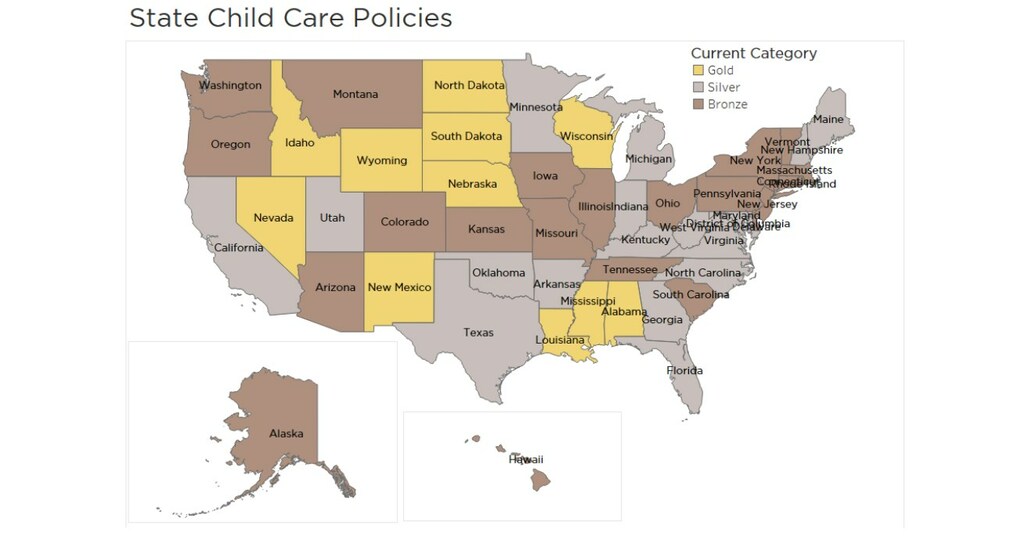With more than three million children slated to lose child care by the end of 2023, the time is now for states, employers and philanthropy to take decisive action on improving child care outcomes
BENTONVILLE, Ark., Sept. 18, 2023 /PRNewswire-PRWeb/ — Heartland Forward’s latest report, Child Care Policy Efficiency: What States Can Do to Promote Affordable, Accessible High-Quality Child Care, assesses the landscape of the inefficient U.S. child care market and makes specific recommendations for states to improve child care outcomes. Accessible and affordable child care is crucial to the U.S. labor market as it allows parents – particularly mothers, to participate in the workforce, and it is essential for early childhood cognitive development for children. Unfortunately, the private market has been unable to provide accessible and affordable child care that focuses on quality early childhood education.
Did you know? Data from the US Census Bureau reveals that from September 2022 through April 2023, 1.3% to 7.6% of adults were missing work to care for children and a recent report by the Society for Human Resource Management estimated inadequate child care causes $37 billion in lost wages and $13 billion in lost productivity for employers each year.
“Americans love free markets almost as much as we love our kids,” said Julie Trivitt, senior economist at Heartland Forward. “We trust market incentives to solve tough allocation issues in our complex economy, but for too long, leaving the important business of child care to the market, has not served the vast majority of families. In evaluating all U.S. states and their efficiency toward three key outcomes: access, affordability and quality, we believe there are key policy solutions that can be a game-changer for families and workers across the country.”
Addressing the urgent child care cliff. With supplemental funding from the pandemic slated to expire in September 2023, estimates project that more than three million children will
lose access to care, and 70,000 programs will close. The collective wisdom is that child care is a complex, multi-faceted issue that will take government, private and philanthropic cooperation to address effectively.
Gold, Silver and Bronze, Measuring State Efficiency. Our researchers explored state-level data to evaluate child care outcomes. We constructed a child care efficiency score using a statistical method comparing each state’s outcomes (i.e.,availability, affordability, and quality) to determine those that get the most outputs relative to child care funding and sorted all U.S. states into three categories relative to each other’s efficiency scores.
Heartland Forward proposes the following solutions:
Helping Silver and Bronze States earn Gold based on the research
For states to improve outcomes, a first step is to consider redirecting child care funding by:
- prioritizing child care subsidies and modifying public pre-K programs to meet needs of working parents
- targeting reimbursement limits to cover quality child care programs
- Utilizing a sliding scale co-pays based on income to prevent abrupt benefit changes for working families
- allowing Temporary Assistance for Needy Families (TANF) funding for child care; this is associated with better overall child care outcomes
Working Toward Platinum:
States cannot achieve an improved status on subsidies alone. There are other considerations to achieve improved child care offerings for working families:
- Streamline regulations between states and localities for safety and capacity
- Support public-private partnerships such as utilizing churches and other public spaces for daytime programs. Sharing an existing space allows a child care provider to operate at a lower cost than if it must build or lease space
- Tax credits or care subsidies for child care workers should be independent of income qualifications
- Encourage employer-provided child care benefits and facilitate strategies that allow small and mid-size businesses to collaborate on offering child care benefits
- Support home care providers by implementing systems that facilitate business efficiencies, such as adopting digital wallets and funding progressional organizations to promote best practices
- Accelerate teacher pipelines for pre-K and early education programs to address teacher shortages
Key findings
The more efficient states:
- tend to use TANF funding for child care
- provide child care subsidies to parents attending job training
- have historically paid subsidies in line with provider costs
- do not have state funded pre-K programs (since these are generally not full-day or year-round programs that best accommodate working parents)
The less efficient states:
- tend to provide subsidies to parents attending high school
- require fewer than 15 hours of work to participate in child care subsidies
The most persistent problem is underfunding. Even in the best-funded states, only about one in four children is served by the child care subsidy program, whereas in the least well-funded states, it’s about one in 17.
Read the report HERE.
# # #
About Heartland Forward
Heartland Forward is a 501c3, nonpartisan think-and-do tank dedicated to being a resource for states and local communities in the middle of the country to help advance economic opportunity. We do this by studying broad economic trends and building data-driven and community-tested partnerships, programs and policies to address the needs of the heartland – all while helping to change the narrative about the middle of the country and kick-starting economic growth.
Media Contact
Blake Woolsey, Heartland Forward, 1 479-957-6301, [email protected], https://heartlandforward.org/
SOURCE Heartland Forward


